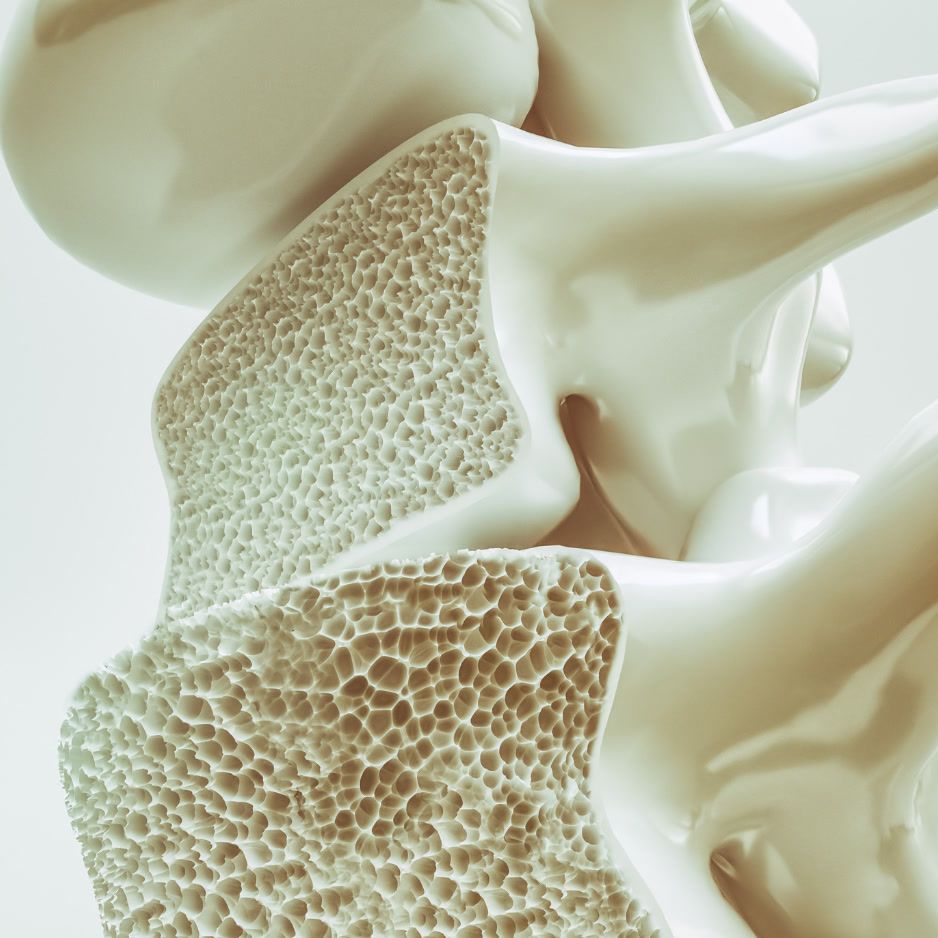Gynura Procumbens: Health Benefits and Growing Tips

Gynura Procumbens Demystified: Health Benefits, Dosage, Growing Tips, and More
Longevity spinach. Sambung nyawa ("prolong life"). Cholesterol spinach. Whatever you call Gynura procumbens, this vining leafy green has earned a reputation as a versatile traditional remedy in Southeast Asian folk medicine. But does modern science support these claims, and how can everyday people safely use—or even grow—it? This guide dives into the research, traditional wisdom, and hands-on advice you need to decide whether—and how—to make longevity spinach part of your life.
Quick takeaway: Early studies hint at cardio-metabolic benefits, and culinary amounts appear safe, but higher-dose extracts require cautious use.
Table of Contents
- What Is Gynura Procumbens?
- Evidence-Based Health Benefits of Gynura Procumbens
- Gynura Procumbens: Dosage, Safety, and Drug Interactions
- How to Grow Gynura Procumbens at Home
- Culinary Uses and Quick Recipes
- Extraction & Supplement Formulation Basics
- Buyer’s Guide – Choosing Quality Plants & Supplements
- FAQ
- Using DEXA Scans to Track Dietary Impact
What Is Gynura Procumbens?
| Latin name | Common names | Plant family |
|---|---|---|
| Gynura procumbens (Lour.) Merr. | longevity spinach, sambung nyawa, bai bing cao, cholesterol spinach | Asteraceae |
Native to tropical Asia, the plant grows as a trailing vine with fleshy purple-tinged stems and dark-green leaves.
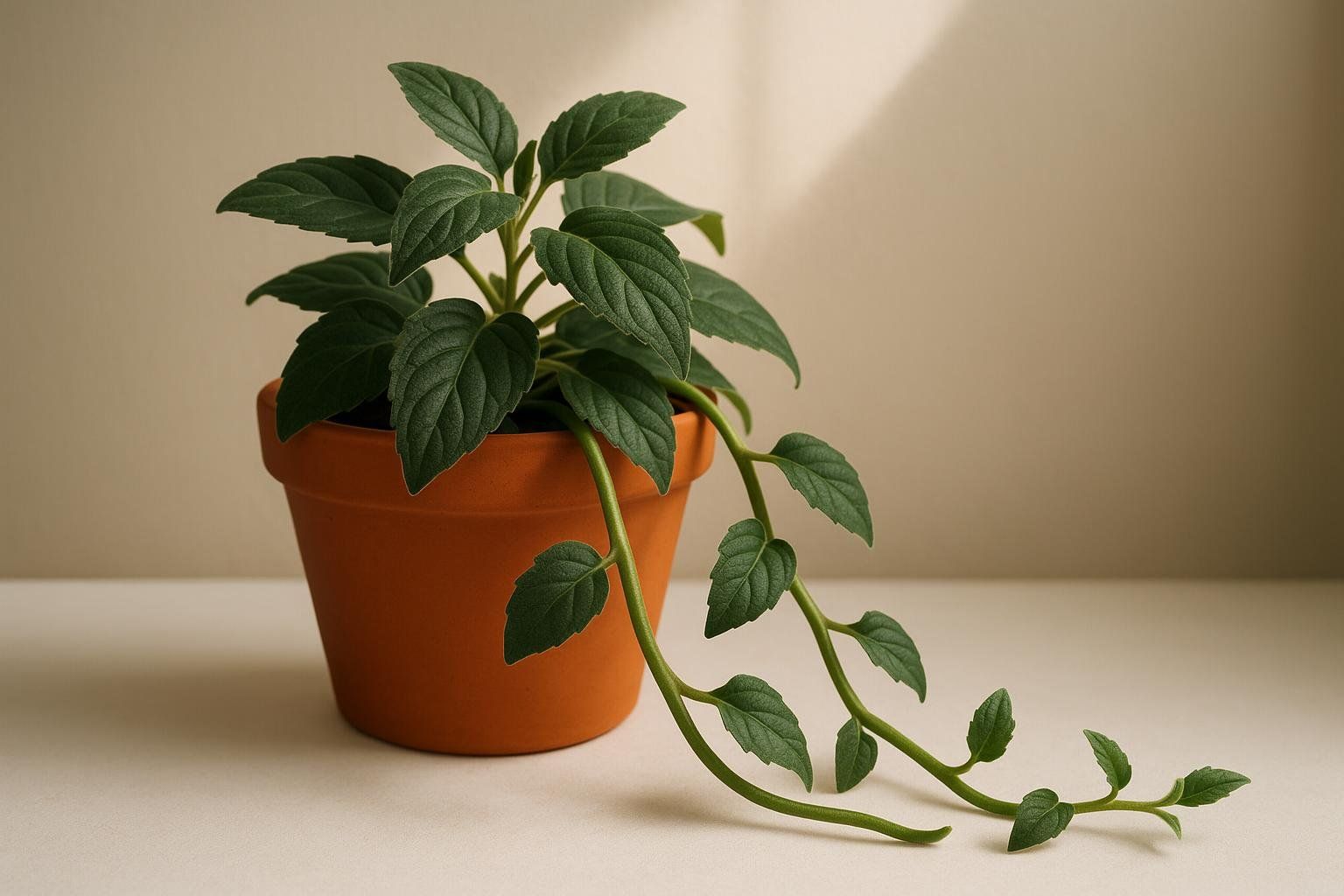
It is prized both as a salad green and an herbal remedy rich in flavonoids (kaempferol, quercetin), saponins, and chlorogenic acids https://www.sciencedirect.com/science/article/pii/S1756464614003405.
Evidence-Based Health Benefits of Gynura Procumbens
Comprehensive reviews, such as Tan et al. (2016), detail numerous biological activities of Gynura procumbens. The table below summarizes some of the most studied effects.

| Benefit | Evidence snapshot | Proposed mechanism | Key citation |
|---|---|---|---|
| Blood-pressure support | ↓ systolic & mean arterial pressure in hypertensive rats | ACE inhibition, ↑ nitric oxide, ↓ Ca²⁺ influx | https://pmc.ncbi.nlm.nih.gov/articles/PMC4791373/; https://www.liebertpub.com/doi/10.1089/jmf.2006.9.587 |
| Blood-sugar regulation | ↓ fasting glucose & HbA1c in diabetic rodents | Extra-pancreatic: ↑ glucose uptake, ↑ hepatic glycolytic enzymes | https://pmc.ncbi.nlm.nih.gov/articles/PMC4791373/ |
| Antioxidant & anti-inflammatory | Strong DPPH scavenging in leaf ethyl-acetate fraction | Flavonoid & chlorogenic acid content | https://www.sciencedirect.com/science/article/pii/S1756464614003405 |
| Organ protection | ↓ ethanol-induced liver fat, ↓ gastric ulcers in rats | Modulation of lipid genes, antioxidative buffering | https://pmc.ncbi.nlm.nih.gov/articles/PMC4791373/ |
| Anti-cancer (pre-clinical) | Inhibits colon, breast, osteosarcoma cell lines | ↑ GST, ↓ CYP-450, ↓ VEGF | https://pmc.ncbi.nlm.nih.gov/articles/PMC4791373/ |
How strong is the evidence? Most data come from cell cultures or animal models. Only a handful of small human trials exist, so consider claims promising but preliminary.
For readers interested in how antioxidants affect muscle recovery, see our deep dive: The Role of Antioxidants in Recovery.
Gynura Procumbens: Dosage, Safety, and Drug Interactions
| Use case | Typical amount in studies | How to translate at home |
|---|---|---|
| Culinary | 30–50 g fresh leaves/day (≈ 1 cup chopped) | Toss into salads or smoothies |
| Tea | 5 g dried leaves infused in 250 mL hot water, 2 × /day | About 1 rounded tsp dried leaves per mug, twice a day |
| Standardized extract | 200–600 mg/day (40–60 % flavonoids) | Follow product label; start low |
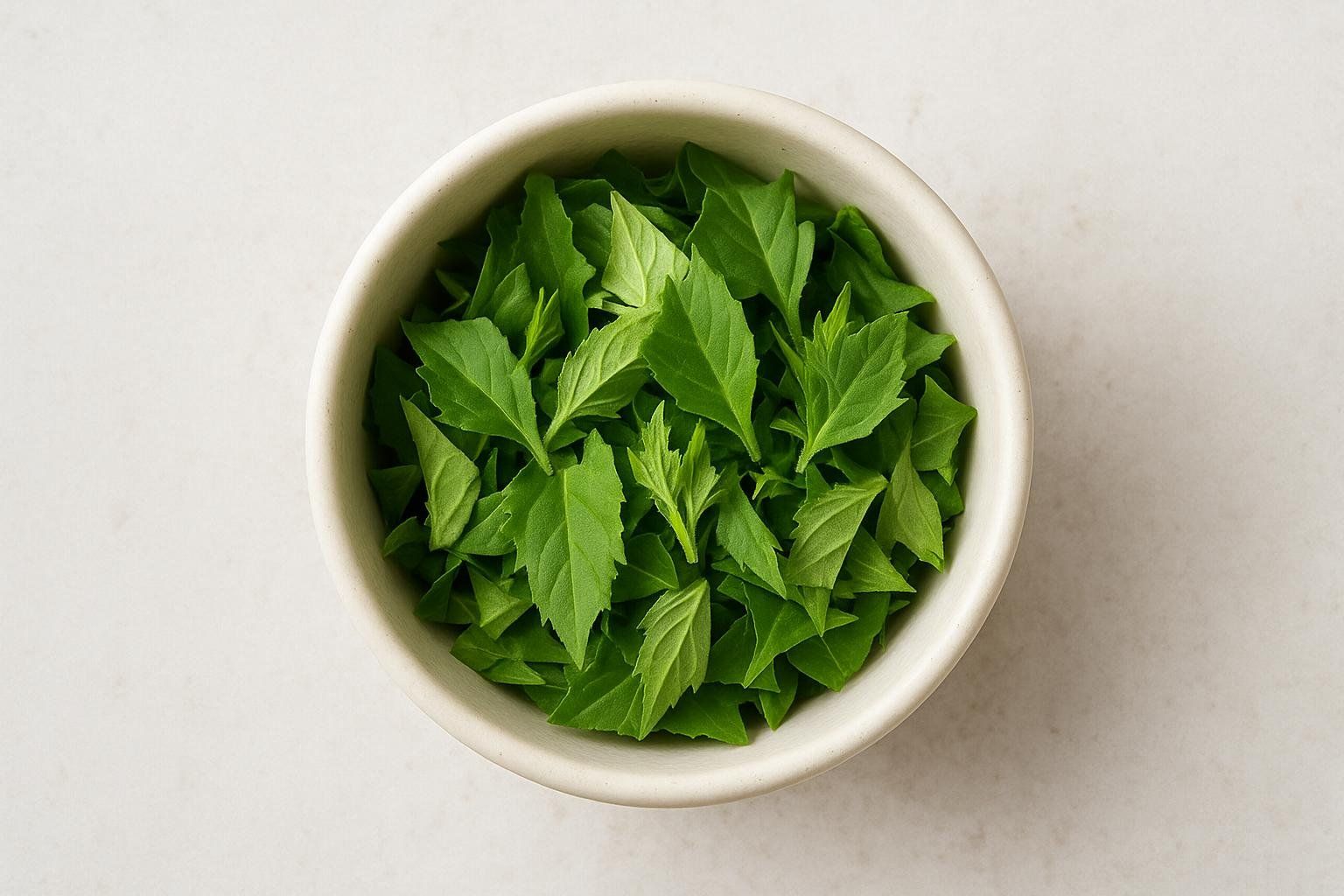
Safety data so far are favourable—no serious adverse events reported in rodent toxicity studies up to 2 g/kg https://pmc.ncbi.nlm.nih.gov/articles/PMC4791373/.
Exercise caution if you:
- take antihypertensives or diabetes medication (additive effects)
- are pregnant or breastfeeding (insufficient data)
- have ragweed or Asteraceae allergies
Always discuss new herbs with a healthcare provider—especially if you’re on prescription drugs.
Regulatory status: In the United States, Gynura procumbens products are typically sold as dietary supplements. Under the FDA’s Dietary Supplement Health and Education Act (DSHEA), manufacturers may not claim their products diagnose, treat, cure, or prevent disease, and the FDA has not evaluated these supplements for efficacy.
How to Grow Gynura Procumbens at Home
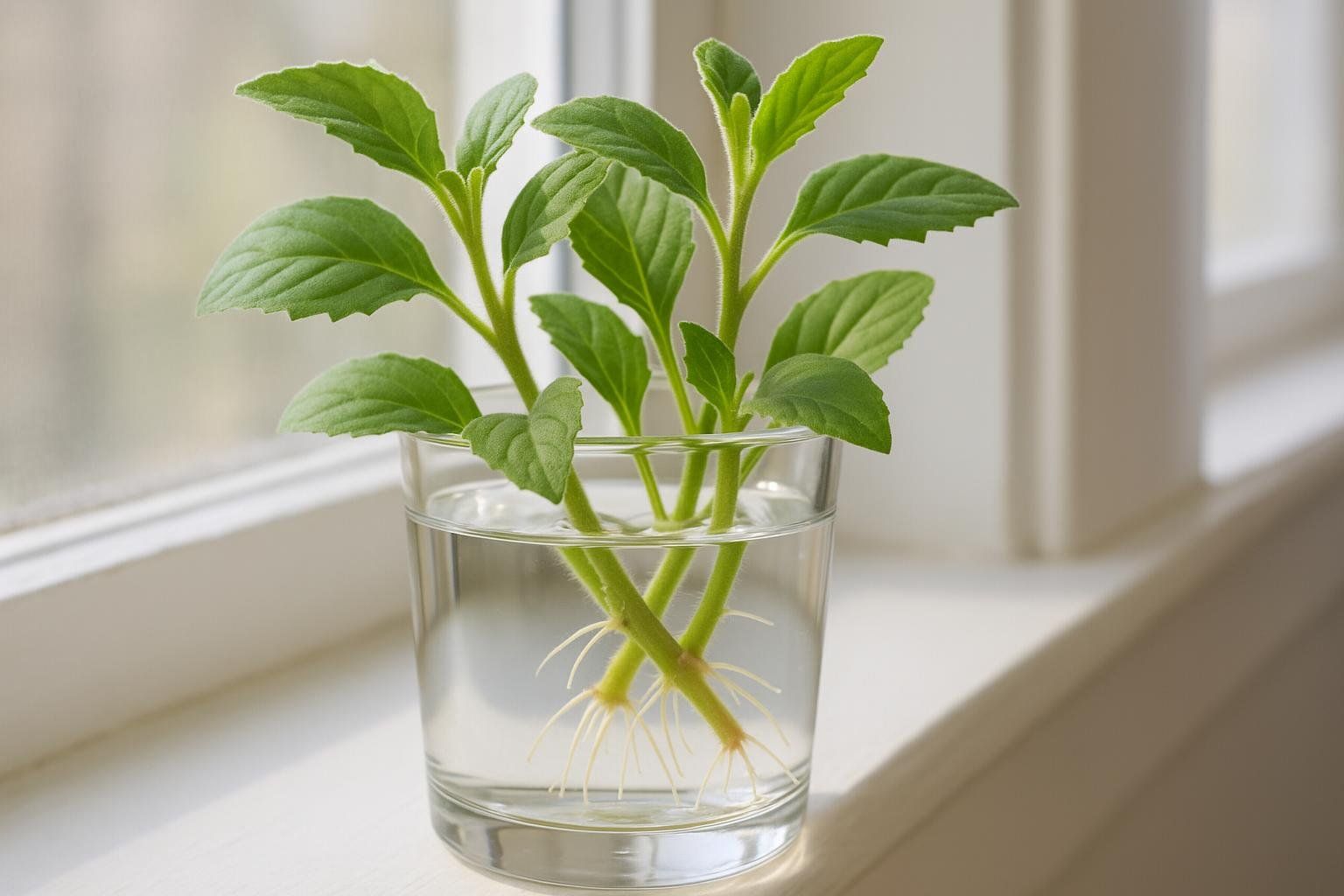
- Climate: Thrives in USDA zones 9–11 but grows indoors year-round under bright, indirect light.
- Propagation: Soft-stem cuttings root within 7–10 days in water or moist soil.
- Soil: Loamy mix, pH 6–7.5; enrich with compost for leafy growth.
- Water: Keep evenly moist; the plant wilts when thirsty but recovers quickly.
- Fertilizer: Balanced 10-10-10 diluted to ½ strength every 3–4 weeks.
- Pests/Disease: Watch for aphids and whitefly. Neem oil or insecticidal soap usually suffices.
- Harvesting: Begin snipping tips once plants reach 8 inches. Frequent trimming encourages bushier growth.
| Problem | Likely cause | Quick fix |
|---|---|---|
| Leaves yellow & drop | Waterlogged soil | Improve drainage, reduce watering |
| Stunted growth, pale leaves | Nitrogen deficiency | Side-dress with compost or fish emulsion |
| Black, mushy stems | Cold damage (< 50 °F) | Move indoors or use frost cloth |
Indoor growing tip: Train vines around a small trellis in a 10-inch pot to create an attractive and accessible source of fresh leaves in your kitchen.

Culinary Uses and Quick Recipes
What does longevity spinach taste like?
Raw longevity spinach has a mild spinach-meets-watercress flavour with a faint earthy bitterness and a pleasantly crisp, succulent bite. Cooking—especially quick stir-frying—softens the bitterness and brings out a slightly nutty undertone.
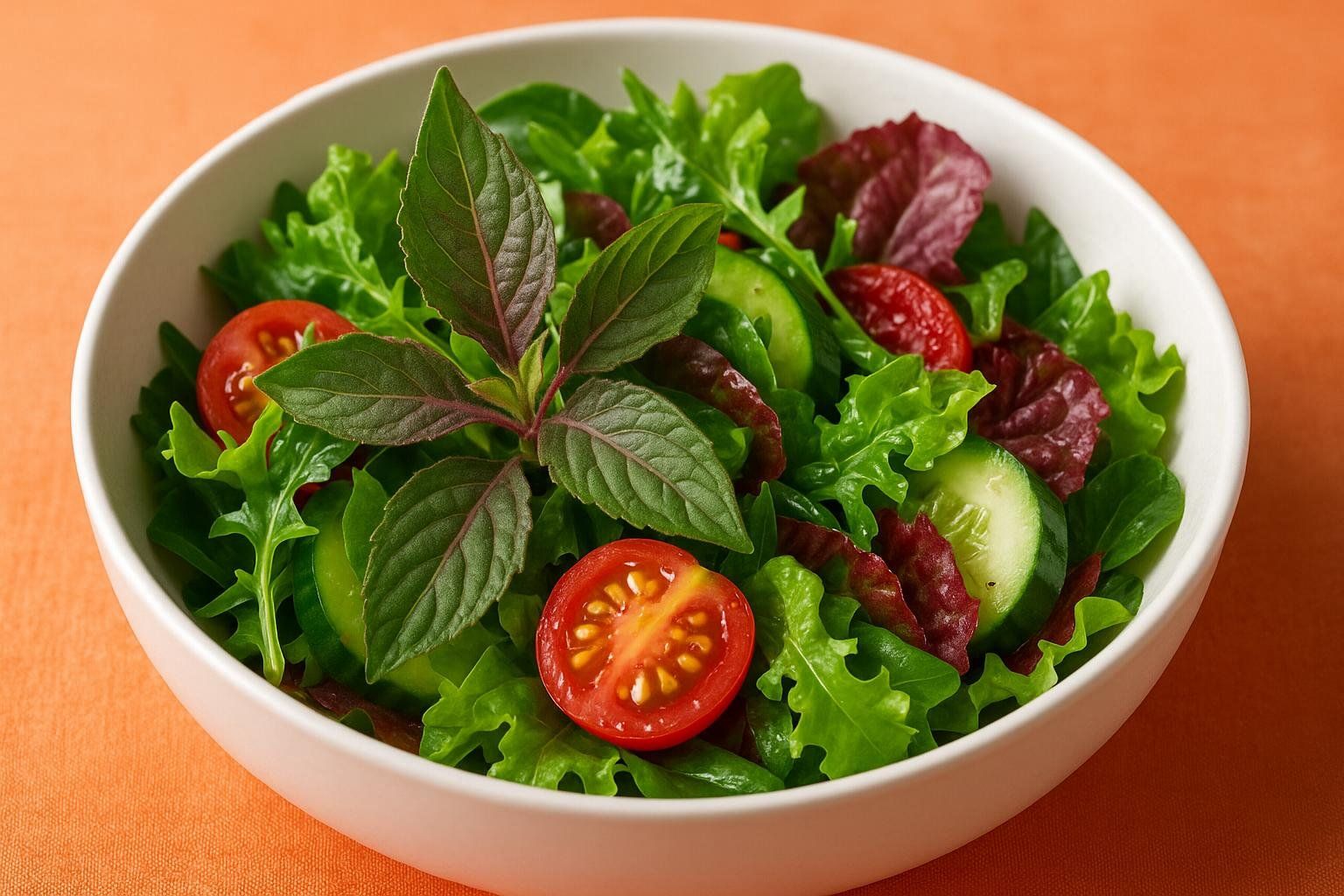
| Dish | Prep tips | Nutrition note |
|---|---|---|
| Raw salad mix | Combine 1 part gynura with 3 parts milder greens to temper bitterness | Heat-sensitive vitamin C and anthocyanins stay intact |
| Green smoothie | Blend ½ cup leaves with pineapple, ginger, and coconut water | Natural pineapple sweetness balances mild bitterness |
| Stir-fry | Flash-cook leaves for 60 s with garlic & sesame oil | Short heat limits polyphenol loss |
| Herbal tea | Steep 1 tsp dried leaves with lemon slice | Lemon’s vitamin C may boost flavonoid uptake |

Extraction & Supplement Formulation Basics
Formulators often target a flavonoid-rich extract (≥ 40 % total flavonoids):
- Dry & mill leaves to < 1 mm powder.
- Solvent extraction: 70 % ethanol or ethyl acetate at 50–60 °C for 2 h maximizes yield https://www.sciencedirect.com/science/article/pii/S1756464614003405.
- Concentrate & dry under vacuum ≤ 45 °C.
- Standardize with HPLC versus quercetin equivalents.
Capsules, tinctures, and powdered drink mixes dominate the market. Look for third-party testing (USP, NSF) to avoid contamination.
Buyer’s Guide – Choosing Quality Plants & Supplements
| What to check | Red flag | Pro tip |
|---|---|---|
| Live plants | Thin, leggy stems; soft black spots | Choose bushy starts with purple-tinged nodes |
| Seeds | Incorrect or ambiguous species name | Look for the full Latin name plus authority—Gynura procumbens (Lour.) Merr.—on the packet |
| Supplements | Proprietary blend with no flavonoid % listed | Opt for standardized 10:1 or ≥ 40 % flavonoid extracts |
| Certifications | None listed | Seek GMP, USDA Organic, or third-party purity seals |
| Reviews | Limited or questionable feedback | Cross-check multiple retailers |
FAQ
What is Gynura procumbens good for?
Pre-clinical studies suggest it may support healthy blood pressure, blood sugar, lipid metabolism, and overall antioxidant status. Gardeners also value it for its rich polyphenol content and because it’s an easy-to-grow leafy green.
What are the benefits of longevity leaves?
Longevity leaves are prized for their high levels of polyphenols—including quercetin and chlorogenic acid—which laboratory studies associate with antioxidant, anti-inflammatory, and cholesterol-lowering effects. While no comprehensive nutrient database exists for Gynura procumbens, it likely provides some dietary fibre, as with most edible greens.
Is longevity spinach safe to eat?
Yes—when consumed as a food (30–50 g fresh leaves per day), it is generally considered safe. High-dose extracts appear well-tolerated in animal studies, but people on blood-pressure or diabetes medication should consult a healthcare provider to avoid additive effects.
Does cooking destroy its benefits?
Most flavonoids are heat-stable up to ≈ 180 °C for short periods. Quick sautéing or blanching preserves the bulk of activity.
Can I substitute it for my blood-pressure medication?
No. Evidence is preliminary and dosing is unstandardised. Think adjunct, not replacement.
How fast will I notice effects?
Animal studies show BP and glucose shifts within 4–8 weeks. Human timelines likely vary.
Using DEXA Scans to Track Dietary Impact
If you’re adding Gynura procumbens to your routine in hopes of improving blood sugar, blood pressure, or lipid profiles, tracking objective changes in body composition—particularly visceral fat—can provide valuable insights into how this dietary addition may support your metabolic health goals. A BodySpec DEXA scan quantifies fat mass, lean mass, and visceral fat, offering a concrete snapshot of metabolic health. Retesting every few months lets you correlate dietary tweaks with real changes instead of relying on scale weight alone.
Key Takeaways
- Gynura procumbens is a polyphenol-packed leafy green with early evidence for cardio-metabolic support.
- Culinary use (30–50 g fresh leaves) offers a low-risk way to experiment.
- Standardised extracts show promise but require diligence on dosing and product quality.
- It’s an easy, forgiving houseplant—ideal for a windowsill nutritious addition to your kitchen.
- Periodic DEXA scans can help you measure real-world impact.
For more longevity strategies, visit Increase Longevity.
Disclaimer: This article is for educational purposes and has not been evaluated by the FDA. It is not a substitute for professional medical advice.
